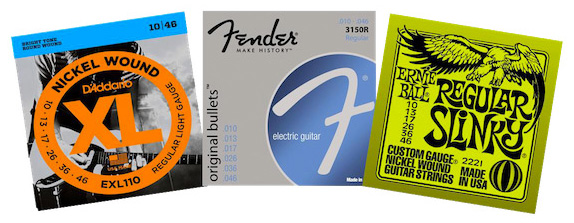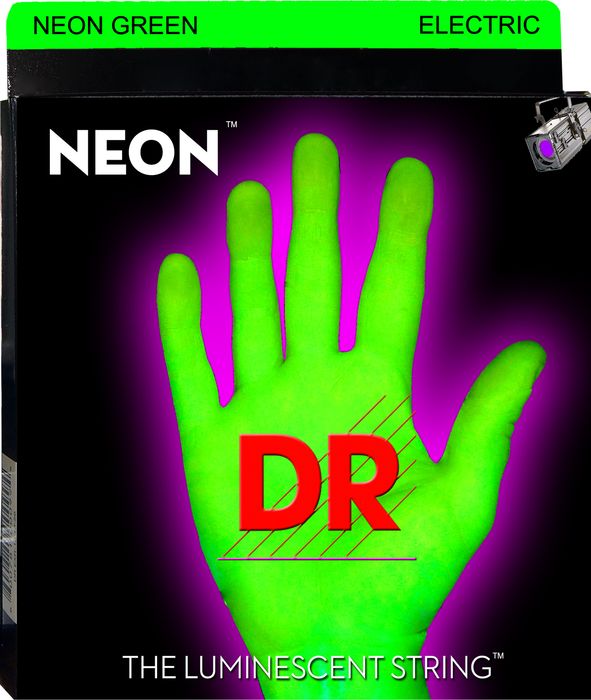How to Choose the Right Strings for Your Electric Guitar?
The strings on your electric guitar have a major impact on its sound and playability. If you’ve taken a look at the huge Musician’s Friend guitar string assortment, you’ve likely realized that there’s a lot to consider in figuring out which strings are right for you and your instrument. Read on to find the strings that best match your electric guitar, music, and playing style.

Strings are manufactured in a range of thicknesses or gauges. These gauges are designated in thousandths of an inch. The lightest strings are typically an .008 (often referred to by guitarists as an “eight”) and the heaviest a .56 (or fifty-six). String gauge has a big influence on playability and sound.
Lighter gauge strings:
are generally easier to play
allow easier bending of notes and fretting
break more easily
produce less volume and sustain
are prone to cause fret buzzing, especially on guitars with low action
exert less tension on the guitar neck and are a safe choice for vintage guitars
Heavier gauge strings:
are generally harder to play
require more finger pressure to fret and bend notes
produce more volume and sustain
are preferred for low tunings such as drop D
exert more tension on the guitar neck
-
String Set Gauge Designations
Most string manufacturers identify the string gauges in a set using terms such as “extra light” or “heavy.” While the exact gauges may vary slightly among manufacturers, here are typical gauge ranges for electric guitar string sets:
Electric Guitar String Set Gauges
“extra super light": .008 .010 .015 .021 .030 .038
"super light": .009 .011 .016 .024 .032 .042
"light": .010 .013 .017 .026 .036 .046
"medium": .011 .015 .018 .026 .036 .050
"heavy": .012 .016 .020 .032 .042 .054
String sets are sometimes identified by the gauge of the high E string—the smallest-gauge string. A “medium” set of electric guitar strings for example might be just identified as an “0.11 set”.

-
Factors to Consider When Shopping for Electric Guitar Strings
The most important factors to consider in shopping for electric guitar strings are:
Your playing style and music genre
How often you play
The sound character and tone you want to achieve
The things that impact those factors are:
String gauge
String construction materials
Type of string winding method
Uncoated vs coated string treatments
We’ll next look at each of these variables to come up with the strings most likely to work for you and your guitar.
-
Electric Guitar String Gauge Playing Characteristics
As we discussed above, lighter strings are easier to play. If you aspire to be a shredder burning up the fretboard with lighting-fast leads and intense rhythm chording, you’ll want to use lighter gauges. That said, if you’re a metal player who uses detuned scales such drop-D tuning, heavier gauges are needed.
Blues and classic rock guitarists who use a lot of string bends often settle on medium gauges that combine reasonably easy bending with more sustain and fatter, richer, darker tone. Mainstream jazz guitarists typically use heavy-gauge flatwound strings since they don’t typically do a lot of note bending and want a broad tone spectrum.
Most new guitars come strung with super-light or light-gauge strings. For beginning players, that’s probably a good place to start. As you develop fretting and picking skills and your fingers gain calluses and strength, you may want to gradually move up to heavier strings, depending on the music you play and the tone you seek. Many guitar manufacturers make specific recommendations about what strings to use. Some produce their own strings or have them custom-manufactured to their specifications.
The key to finding the gauges that work best for your playing style is experimentation. Try various gauges, brands, and string compositions to find those that feel best to your fingers and are most pleasing to your ears.
Differences between various string types can be pretty subtle, but focusing on the nuances of touch and tone can help lead to your own signature sound.
Keep in mind that changing string gauges may require adjustments to your string height or “action” at the bridge saddles as well as adjustments to the nut and neck. Depending on your skill and the type of guitar you own, this may be better left to a guitar tech.
String Durability
Another factor to consider is the frequency with which you play. If you’re an occasional guitarist who plays just a few times a month and tend to play with a light touch, you may find less expensive strings perfectly suitable. On the other hand, if you’re devout about practice or play often and hard, premium-grade, heavy-duty strings may prove a better buy in the long run. Many manufacturers grade their strings according to their durability.
-
Electric Guitar String Construction Materials
All electric guitar strings are made using steel, nickel, or other magnetically conductive metal alloys since they’re essential for transmitting string vibrations to the magnetic pickups. The type of plating or coating applied to the steel alloy has a significant impact on the strings’ sound. Here are some general tonal characteristics of the most common types of strings:
Nickel-Plated Steel: Balanced brightness and warmth with more attack
Pure Nickel: Less bright than nickel-plated steel with added warmth
Stainless Steel: Bright, crisp, “edgy” tone with sustain and corrosion resistance. Less prone to finger squeaks.
Chrome: Warmth with less resonance; often chosen by jazz and blues guitarists
Titanium: Fairly bright tone with excellent strength
Cobalt: Wide dynamic range with notable brightness and pickup response
Polymer-coated: Less sustain than equivalent uncoated strings; corrosion-resistant
Color-coated: Some coatings have added colorants for visual appeal; tonality varies
Valote
(collectibles: musiciansfriend )